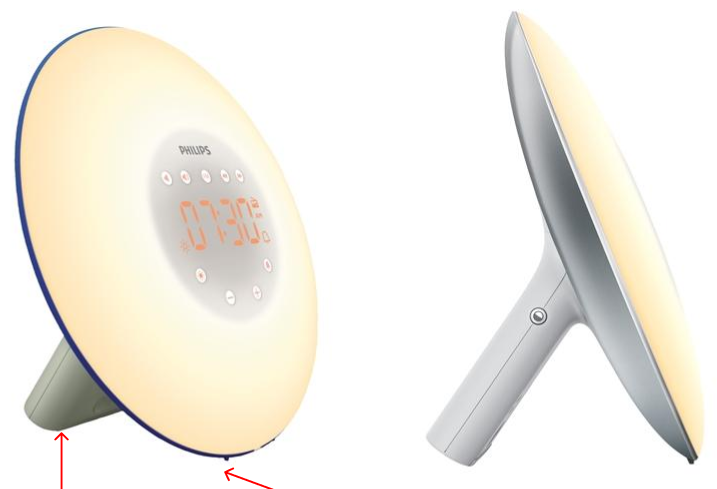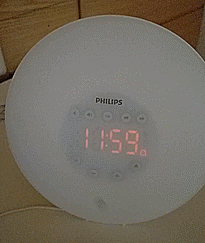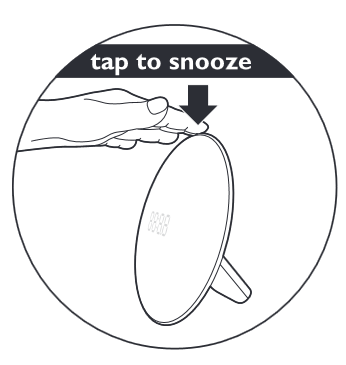To tell it right away, I’m not a morning person. Struggling to get out of bed nearly every morning I was looking for some ‘hacks’ to improve that situation.
I guess it was some kind of advertisement or sponsored post which drew my attention to the Philips Wake-up Light. It was claimed to be a great gadget that eases the process of getting up/out of bed.
I’m using it for around 18 months now and bottom line I have to say that I like the more subtle approach to wake you up with a combination of light (the light is already starting to fade/shine half an hour before the actual alarm time is due, to already “prepare” your body for waking up) and fading alarm volume.
While in fact, the more subtle approach to wake you up, indeed has a positive effect on me — the Usability and in the end the whole Experience of using the product on a daily basis is deeply impacted by the poor design of the product.
My bold assumption is that this product was not tested in a common day-to-day environment. Otherwise, there must have been some issues discovered in the first place.
I went for the cheaper model HF3501 as I didn’t saw the added value of additional alarm presets (which in retrospective would be good thing, for using separate times for weekday and the weekend — especially when changing time is bit of a pain — more on that topic later) and the slimmer visual Design didn’t bother me either.
Pain points
The weight/stability Problem
The alarm clock is really light. If you try to push some front-facing “buttons”, you’re constantly moving the clock. Even the analogue alarm clock of my girlfriend which was about 15€ has some sort of loading in it to be more stable. Additionally, it’s stand is also not really solid when force is applied on the top (more on that later)

The “Buttons”
Most of the controls are resistive Buttons which are located at the Front of the clock. This fact is already quite annoying as they are not easy to find/grasp when you are not precisely looking for them. Then there is the already mentioned issue of lacking weight, so you push/turn the clock if you apply pressure on those resistive buttons. But I guess having “click” buttons would anyhow not work with the above-mentioned stability problem.

Snooze Function
This is very much hidden from the user. Maybe on purpose to make snoozing harder as there are some claims that snoozing is anyhow a bad idea 😉

So after you are gently woken up, you need to somehow precisely hit the upper edge of the clock to snooze the alarm. However, nobody knows the size and also the exact place of the “button”. Recently i figured out that tapping more on the upper front works better than the top edge.This again causes trouble to actually “press” it. You don’t know if you have to just touch it, or it needs to be pressed in a more “aggressive” way.Here again comes the stability Problem mentioned above. If you hit the snoozing Edge not properly (in the middle of the Clock then it can flip. Again not what you want if you’re still morning grumpy.
Disable/Confirm Alarm
Confirming the alarm can also not considered to be a main Action on the Clock. In order to mute the alarm and switch off the light, you always need to touch two of the small Buttons which are aligned on the opposite side to each other. Maybe it was a conscious decision to add some friction in form of the Button placement but the touch target and touch handling is again not an easy thing.
Just today I discovered another issue with the buttons.When the alarm fires the front of the Clock looks like this:

As you can see the above mentioned buttons for Light and Alarm are accompanied with status indicators who have the same symbols just slightly above them. One could argue this makes sense in terms of cohesion, but there’s a flaw in it.
This morning I woke up and tried to switch of the light by pressing multiple times on the illuminated status indicator and was confused why it wasn’t working. I tried several times by applying different pressures and aiming properly. Nothing happened.
It took me quite a while until I realized that I was hitting the indicator and not the button itself. (Note: I’ve been using this product for 18 months now)They both look too similar and also the illumination of the indicator drives your attention to it. The resistive buttons are lacking the touch feedback therefore one cannot distinguish it from the rest of the surface.
Conclusion
Again I have to point out that the general Idea and process of the alarm itself is what still makes me use this product but every day I get mixed feelings when I’m struggling to control it.
The mentioned issues might seem just minor to a lot of people, but actually addressing/ identifying such flaws in the first place would have made the product much more enjoyable in the end.

